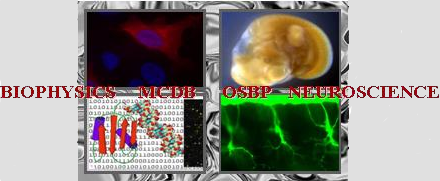Talk abstracts
Talk on Tuesday 03:45-04:00pm submitted by Jamison Law
Identifying inhibitors of the FraB deglycase as therapeutics for Salmonella-mediated gastroenteritis
Jamison Law (OSBP), Kate Zaharova (Department of Biological Chemistry and Pharmacology, The Ohio State University), Anice Sabag-Daigle (Department of Microbiology, The Ohio State University), Austin Cool (Department of Chemistry and Biochemistry, The Ohio State University), Steffen Lindert (Department of Chemistry and Biochemistry, The Ohio State University), Charles Bell (Department of Biological Chemistry and Pharmacology, The Ohio State University)
Abstract:
Non-typhoidal Salmonella enterica (Salmonella) causes significant morbidity/mortality (193 million/85,000 worldwide in 2016) and economic costs ($11 billion in 2010, US alone) 1,2. No vaccines are available, existing antibiotics are disfavored, and drug targets are scarce due to the pathogen’s versatility in exploiting redundancy/overlap in metabolic pathways 3-9. However, fructose-asparagine (F-Asn) was recently discovered as a nutrient utilized by Salmonella via five proteins encoded in the fraRBDAE operon 10. Surprisingly, ΔfraB mutants could grow in glucose but not in glucose + F-Asn. This growth inhibition is due to the toxic buildup of 6-phosphofructose-aspartate, the substrate of FraB 11. The absence of FraB in mammals and most members of the human microbiota makes FraB an attractive anti-Salmonella target 12. Therefore, we conducted high-throughput cell-based and biochemical assays to identify FraB inhibitors. From screening 131,165 compounds in the biochemical assay, we found 72 and 28 compounds that inhibit FraB at 250 and 25 µM, respectively. While none of these hits inhibited wild-type Salmonella, 8 of them (excitingly!) inhibited the growth of ΔtolC Salmonella, a mutant whose efflux capability is dampened. These hits are now the focus of medicinal chemistry initiatives. To aid this objective, we also obtained a high-resolution structure (2 Å) of FraB. Unexpectedly, the proposed catalytic residues, E214 and H230, were separated by 24 Å with the C-terminal tail (residues 318-331) acting as a lid over the active site. Kinetic studies of the FraB Δ318-331 mutant revealed a 1.5-fold lower kcat and a 150-fold higher Km compared to the wild-type, yet the structure revealed that E214 and H230 were now only 11 Å apart. Molecular dynamics simulations revealed that the catalytic center (residues 224-240) was rendered more flexible upon removal of the C-terminal tail, supporting the notion of active site restructuring upon substrate binding. These findings bolster substrate/inhibitor co-crystallization prospects and help forge an exciting path towards Salmonella-specific therapeutics.
References:
1. Collaborators GDD. Lancet Infect Dis. 11 2018;18(11):1211-1228.
2. Scharff RL. J Food Prot. 2012;75(1):123-131.
3. Strugnell RA, et al. Curr Opin Microbiol. Feb 2014;17:99-105.
4. Martin LB. Curr Opin Infect Dis. Oct 2012;25(5):489-99.
5. Gopinath S, et al. Proc Natl Acad Sci USA. 2014;111(44):15780-15785.
6. Diard M, et al. Curr Biol. 2014;24(17):2000-2005.
7. Wiström J, et al. Ann Intern Med. 1992;117(3):202-208.
8. Becker D, et al. Nature. 2006;440(7082):303-307.
9. Steeb B, et al. PLoS Pathog. 2013;9(4):e1003301.
10. Ali MM, et al. PLoS Pathog. 2014;10(6):e1004209.
11. Sabag-Daigle A, et al. Sci Rep. 2016;6:28117.
12. Sabag-Daigle A, et al. Appl Environ Microbiol. 2018;84(5).
Keywords: Salmonella, crystallography, therapeutic
